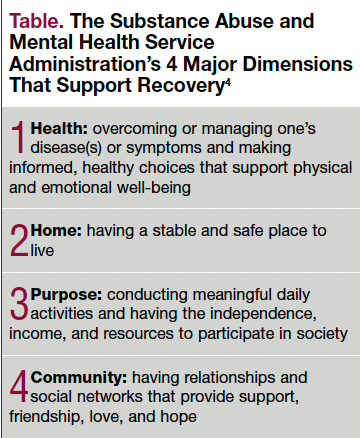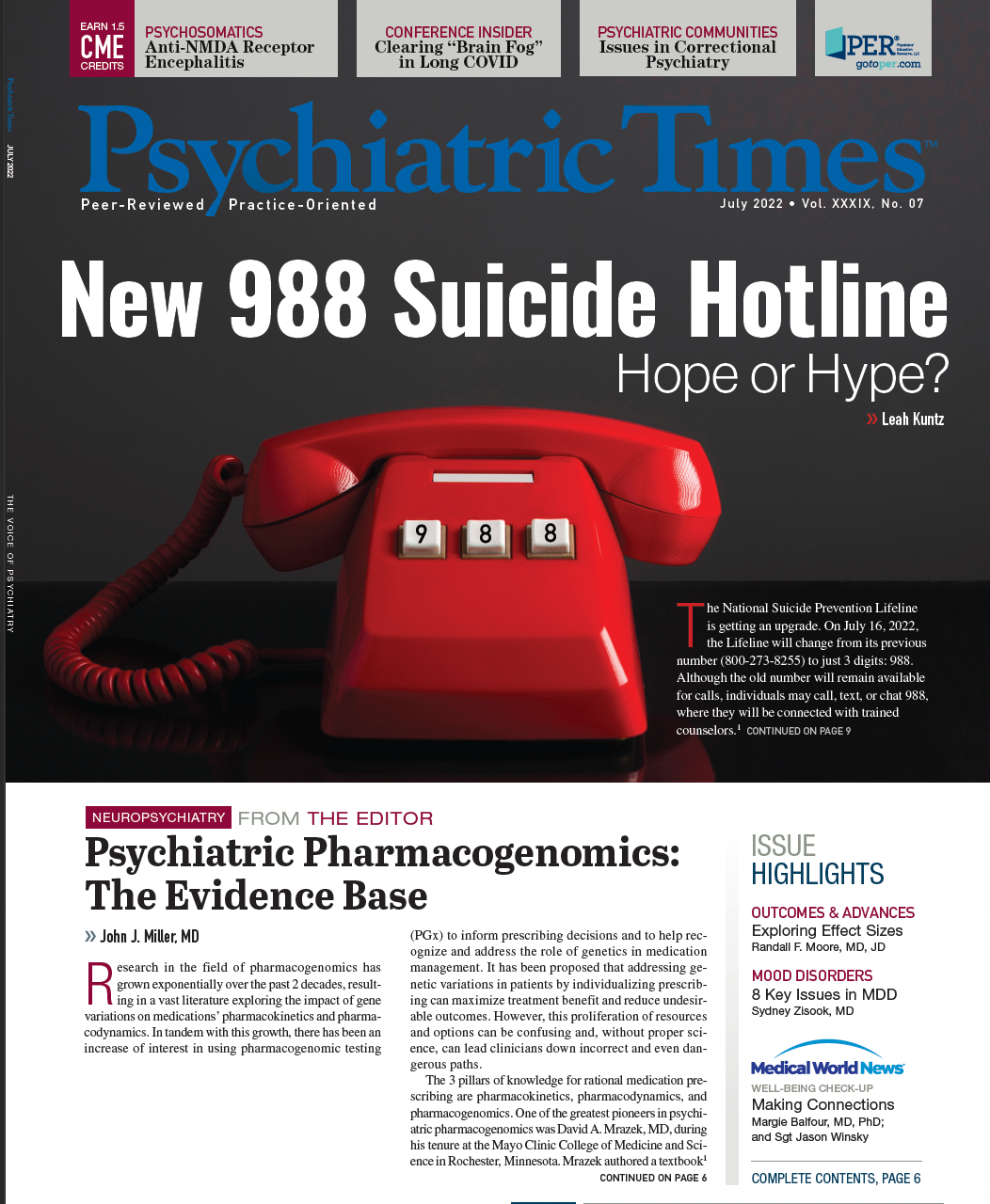Publication
Article
Psychiatric Times
Caregiving: Walking the Personal and Professional Tightrope
Author(s):
What happens when a clinician is faced with addiction in their own family?
alexx_60/Adobestock

COMMENTARY
August 16, 2019, in New Haven, Connecticut, was a beautiful summer evening. A delicious dinner at the Study at Yale hotel, where we were staying for the night, wrapped up a packed day of activities. These included a presentation and conversations about evidence-based addictions treatment modalities. The day could not have been better. I remember thinking that this was addiction treatment done right. A colleague invited a group of us to walk over to the Arethusa Farm Dairy store for their famous “designer” ice cream. I asked for a minute to go to my room and slip on some comfortable shoes for the 5-minute walk. I never returned. Instead, I called my colleague to tell him and everyone else to go ahead—I had to handle an urgent matter. I had at least 10 missed calls and several text messages from 2 neighbors.
As clinicians, we are trained and encouraged to have an objective approach to treatment, especially with addictions—substance use addictions in my case. In the Substance Abuse and Mental Health Services Administration (SAMHSA) Technical Assistance Publication (TAP) series (particularly TAP 21), the addiction counseling competencies stress the importance of this approach. The knowledge, skills, and attitudes of professional practice are all structured around preserving the patient’s autonomy and promoting the clinician’s need for objectivity.1
Traditionally, evidence-based modalities including motivational interviewing (MI), motivational enhancement therapy (MET), cognitive behavioral therapy (CBT), contingency management interventions, and community reinforcement and family therapy (CRAFT), to mention a few, all advocate for openness and giving patients the benefit of the doubt—even when the reported interventions seem counterintuitive and deviate from our personal beliefs and values.2
Succinctly, clinicians should prioritize the patient’s needs and well-being while “keeping a lid” on whatever frustrations may arise. After all, there may or may not be professional consequences. As clinicians, we are conditioned to not cross these boundaries regardless of our feelings. Often, this is so we can preserve the therapeutic alliance, which in turn facilitates desired treatment outcomes and prevents contention or confrontation with the patient. When it comes to chronic disease prevention and health promotion, the Centers for Disease Control and Prevention’s (CDC) National Center for Chronic Disease Prevention and Health Promotion identifies social connectedness as one of the 5 pillars of their framework.3 Additionally, throughout our training, the need to preserve a therapeutic alliance with our patients is emphasized, particularly because a healthy relationship is one of the major protective factors. But what happens if the patient is a loved one?
We are not trained how to respond when the individual struggling with a substance use disorder or addictions is a loved one. There is no manual on how to help ourselves when we are faced with the challenges of the caretaking role for our loved ones. Although we can apply the same skill set to manage and contain our emotions (ie, regulate ourselves and convey self-control), when it comes to disappointment, frustration, or betrayal by a loved one, those emotions hit a different nerve altogether. Fulfilling the clinician role is entirely different when that patient is not related to us. The shift in dynamics from a professionally trained caregiving role to complex family relationships presents its own set of challenges—all of which amplify the above-mentioned feeling with an almost visceral pain.
Shame and Guilt: Stepsisters of Fear and Control
In 2016, I embarked on a journey to use my training as a psychiatric nurse practitioner to give back to the communities I hail from. With a passion for substance use treatment, I set out to volunteer in Uganda. By 2018 it was clear that for me to contribute in a tangible manner, I needed to become licensed to practice in Uganda (which I did). Part of the licensing process required me to undergo 8 weeks of orientation at the main mental health and substance use referral hospital—Butabika National Referral Mental Hospital—in Kampala. It was during that training and orientation that the state of substance use in the country became clear to me.
Although there were systems and structures to provide care and support to individuals who struggle with substance use conditions, support for caregivers and family members was nonexistent. In fact, shame and guilt were all I saw. Using fear to scare individuals off substances was normalized, although not fruitful. The whole notion of “no one brings meals when your child is struggling with substance use addictions” was and continues to ring true.
SAHMSA defines recovery as “a process of change through which people improve their health and wellness, live self-directed lives, and strive to reach their full potential.” Further outlined in the Table are the 4 major dimensions that support recovery.4
The Substance Abuse and Mental Health Service Administration’s 4 Major Dimensions That Support Recovery4

For the purpose of this article, I will dwell on the community part. To clarify, my formative years were spent in a strict evangelical household in which alcohol consumption was demonized. The little exposure to alcohol use and related dysfunction that I vaguely remember occurred when I was 10 or 11 years old. I do remember that whenever my stepmother consumed alcohol, there was palpable tension in the home. That said, my early childhood exposure to alcohol use disorder–related dysfunction was minimal. In my youth, I was introduced to shaming and ridiculing those who consumed alcohol. My father and stepmother converted to evangelical Christianity. As part of expressing our newfound faith, we as a family bore witness to how Jesus can make a difference “if we turn to him and confess our sins”; we then become born again. As such, I will not claim to have been in involved in any caretaker role for family or friends until my marriage.
Little did I know that in 2019 I would be on the receiving end of the same isolation experienced by family members caring for their loved ones who struggle with substance use disorders and/or other addictions. Having a loved one in the throes of alcohol addiction is a uniquely subjective experience. Not one experience is the same as another. Shame and guilt are powerful tools that can shake even the most grounded of us. Now I am happy to report that my husband is more than 2 years into his recovery and he continues to work at it. I will also add that we (because addiction affects the whole family) continue to work through the hiccups and hang-ups. I will also add that the experience of dealing with my spouse’s alcohol addiction was and continues to be my motivation for the nonprofit I founded at the end of 2019.
When I used the term visceral pain before, I meant that the frustration, perceived betrayal, hopelessness, anger, and disgust all took on a different tone when it came to my loved one’s addiction. I must admit, I was not graceful at all. I teetered between intellectualizing his addiction and minimizing the impact on us all as a family unit. The denial took on a life of its own. I would convince myself that he only overdrank and binged when he was not happy, and that he was far from meeting the criteria for alcohol use disorder. If it were someone else, with the evidence at hand and long history of telling events, I would not hesitate to diagnose them with severe alcohol use disorder.
Denial Protects, Until It Doesn’t
The screeching wheels came to a stop on August 16, 2019. While I was away at the previously mentioned addictions-related event (go figure), an incident happened at my home. This time I could not intellectualize it and I could not wish it away. I remember going into full damage-control mode, something I had trained my brain to default to. I thought to myself, Contain the damage; what happens in the house stays in the home. Deal with this and handle the rest later. Except this time, I was not physically present to contain the damage. In hindsight, this incessant need to control aspects of my life is what perpetuated my denial all along—even with the “glaring open secret” out there for all to see.
I now realize how oblivious I was to the bitterness that had consumed me. The bitterness in turn triggered my childhood trauma that had been locked away safely (or so I thought). Reflecting on this, I was frustrated at my inability to tap into the same skill set I utilize with my patients as a trained clinician. One might wonder why I could not apply the same empathetic skills to my loved one that I apply to my patients. When it came to my own family member, those skills had waned. I now know that the underlying emotion was fear. Fear of losing my spouse and our children growing up without their dad. Fear of others finding out that my spouse was in fact deep in the vicious cycle of alcohol use disorder. Whenever he had his “episodes,” I reacted with anger. Why was he destroying us and everything we had built? To remind you, I have hundreds of hours of training on addictions, the psychopathology of addictions, the resultant behavioral consequences, and much more. That knowledge was readily available to me as a professional—but not as a wife. By the way, I have no trouble helping patients and their loved ones understand the multifactorial contributors to addictions, especially substance use. However, while I was actively navigating the trying times, that knowledge eluded me.
The events that followed were humbling and brought me to my knees. In the immediate days and weeks after the incident, we had the support of my in-laws, who wrapped their arms and resources around us. We were able to get my loved one treatment in an intensive outpatient treatment center that also provided intensive therapy. This enabled him to address the underlying issues. I will also add that the support left as quickly as it came. That is when the deep sense of loneliness set in for me. Except for 1 friend (who had accompanied me to the Connecticut event and was abreast of what had transpired), others who knew about the incident related to the night of August 16 chose to excuse themselves from our lives (and who can blame them?). Those who would have offered support did not know the full extent of what was going on. This was partly due to my conditioned containment strategies. That said, at this point, it was not my place to tell anyone. I also had to discern between respecting my loved one’s privacy and giving him the space to tell his story, without shaming him.
I often tell my patients that detox and intensive treatment are a gateway to treatment, but the real hard work—aka treatment— is ahead of them. This is because interventions often happen when patients are living in structured or controlled environments. If I thought the events of August 16 had broken me, I was in for a rude awakening in the months to come. With the onset of the pandemic, work and life balance strategies went out the window. My fear was seeing my loved one’s efforts come undone, especially by the collective pandemic-induced stress that we were all feeling as a society. My overbearingness (rooted in trauma) went into overdrive. Even with minimal alcohol in the house, I developed a certain paranoia about the 1 to 2 bottles of wine we had (which we used for cooking).
This experience clouded my clarity regarding all the work that my loved one had put into his recovery. It was then that I knew I needed help. I underestimated the compounded effects of taking care of others in my professional life, as well as taking care of a loved one. Self-help books, therapy, exercise, and sleep hygiene all helped, but the effects were fleeting. I distracted myself with work; however, the triggers were ever present. It did not take much to get me into that negative space where I never want to be.
Invitation to Change
In summer 2021, a friend—a therapist himself—introduced me to the Center for Motivation and Change (CMC) as a resource for my patients. By this time, as a society, we knew things were not good. Before long I was invited to visit the CMC in the Berkshires in Massachusetts. It was through CMC that I was introduced to the Invitation to Change (ITC) model and the Foundation for Change. In November 2021, I completed the level 1 training as a clinician. The goal of the Foundation for Change is to offer a compassionate approach to substance use disorders through their ITC approach, which is “a holistic helping framework designed for the families and loved ones of people struggling with substances, as well as the professionals who support them.” Simply put, the ITC approach combines science and kindness. Its bedrock is that “evidence-based strategies are combined with compassion and care, making a wealth of research-supported and clinically tested knowledge accessible, practical, and understandable for everyone who needs it.”5
Combining science and kindness—that was it! It occurred to me that while I was busy taking care of everyone, the truth was that I was also starting to show signs of compassion fatigue, which in turn affected my kindness and empathy scales. I had convinced myself that all was under control. Going through the ITC training helped validate my feelings, without taking away or adding anything. I know that I am a better spouse, mother, and clinician today than prior to the training. To put it bluntly, ITC has not given me the tools; rather, it holds all the tools together. ITC is my toolbox in which I continue to gather and store the tools that help me stay organized and feel secure in my capacity as an effective clinician while recognizing my brokenness.
I now have new lenses through which I view addictions treatment and support for families, and my empathy scale has been recalibrated. This has helped me clean up my relationships and find new meaning in what it means to be an ally—the very word I chose as the name of the nonprofit organization I founded in 2019. I like to tell people that we were allies before being an ally was trendy.
I will close by reflecting on a direct quote from the SAHMSA website4:
“The process of recovery is supported through relationships and social networks. This often involves family members who become the champions of their loved one’s recovery. Families of people in recovery may experience adversities that lead to increased family stress, guilt, shame, anger, fear, anxiety, loss, grief, and isolation. The concept of resilience in recovery is also vital for family members who need access to intentional supports that promote their health and well-being. The support of peers and friends is also crucial in engaging and supporting individuals in recovery.”
Ms Wilkinson is an advanced practice nurse with an interest in addictions and trauma. She is the founder and president of Your Ally Foundation, Inc. Additionally, she is a clinical preceptor at Boston College William F. Connell School of Nursing in Chestnut Hill and Regis College in Weston, both in Massachusetts.
References
1. Addiction counseling competencies: the knowledge, skills, and attitudes of professional practice. SAMHSA. Updated 2017. Accessed April 11, 2022. https://store.samhsa.gov/sites/default/files/d7/priv/sma12-4171.pdf
2. Foote J, Wilkens C, Kosanke N, Higgs S. Beyond Addiction: How Science and Kindness Help People Change. Scribner; 2014.
3. Social determinants of health. CDC. Updated March 29, 2022. Accessed April 11, 2022. http://cdc.gov/chronicdisease/programs-impact/sdoh.htm
4. Recovery and recovery support. SAMHSA. Updated April 4, 2022. Accessed April 11, 2022. https://www.samhsa.gov/find-help/recovery
5. Our approach: invitation to change. CMC: Foundation for Change. Accessed November 12, 2021. https://cmcffc.org/our-approach ❒







